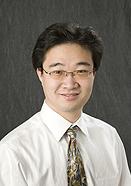Program Information
Estimation of Radiobiological Doses (BED and EQD2) of Single Fraction Electronic Brachytherapy That Equivalent to I-125 Eye Plaque: By Using Linear-Quadratic and Universal Survival Curve Models
Y Kim*, T Waldron , E Pennington , University Of Iowa, College of Medicine, Iowa City, IA
Presentations
SU-F-T-2 (Sunday, July 31, 2016) 3:00 PM - 6:00 PM Room: Exhibit Hall
Purpose:To test the radiobiological impact of hypofractionated choroidal melanoma brachytherapy, we calculated single fraction equivalent doses (SFED) of the tumor that equivalent to 85 Gy of I125-BT for 20 patients. Corresponding organs-at-risks (OARs) doses were estimated.
Methods:Twenty patients treated with I125-BT were retrospectively examined. The tumor SFED values were calculated from tumor BED using a conventional linear-quadratic (L-Q) model and an universal survival curve (USC). The opposite retina (α/β = 2.58), macula (2.58), optic disc (1.75), and lens (1.2) were examined. The % doses of OARs over tumor doses were assumed to be the same as for a single fraction delivery. The OAR SFED values were converted into BED and equivalent dose in 2 Gy fraction (EQD2) by using both L-Q and USC models, then compared to I125-BT.
Results:The USC-based BED and EQD2 doses of the macula, optic disc, and the lens were on average 118 ± 46% (p < 0.0527), 126 ± 43% (p < 0.0354), and 112 ± 32% (p < 0.0265) higher than those of I125-BT, respectively. The BED and EQD2 doses of the opposite retina were 52 ± 9% lower than I125-BT. The tumor SFED values were 25.2 ± 3.3 Gy and 29.1 ± 2.5 Gy when using USC and LQ models which can be delivered within 1 hour. All BED and EQD2 values using L-Q model were significantly larger when compared to the USC model (p < 0.0274) due to its large single fraction size (> 14 Gy).
Conclusion:The estimated single fraction doses were feasible to be delivered within 1 hour using a high dose rate source such as electronic brachytherapy (eBT). However, the estimated OAR doses using eBT were 112 ~ 118% higher than when using the I125-BT technique. Continued exploration of alternative dose rate or fractionation schedules should be followed.
Contact Email:

